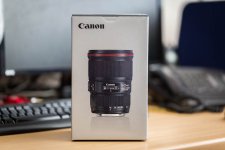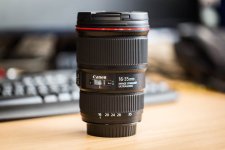It may also be in part due to the short flange distance which causes much mre acute off-axis angles on the frame edge E.g. sensors work best if the light rays hit the sensor perpendicular to the sensor plane, but obvious for the frame edges the ray must be bent. With a shorter flange distance the rays must be bent even more, which A) causes big issues for the sensor and requires much more sophisticated micro-lens arrays to prevent specular reflections and color shifts, and B) the lens must be designed to present the sensor with increasing off-axis light rays while maintaining focus for different color wavelengths etc. Leica lenses mounted to the Sony can have big issues.
I also think the best way to handle autofocus is to go back to the screw drive system for mirror less cameras., e.g. Nikon's 50mm AF-D lens is much smaller than the AF-S lens almost entirely due to having to add focus motors into the lens. If you really want a small system you want a single focus motor in the camera, not one in every single lens.
Still, the ultimate limit is the image circle, focal length and aperture.
Interestingly there is $500 off the Sony A7 at the moment in the US and at the current price ($1200) is attention grabbing for a FF camera. I thought about it a little but it just doesn't really make sense once you start looking at the lenses, weights, prices. You invariably end up compromising on aperture (the 24-70mm is f/4.0, the 28-70mm is f/5.6, the 35mm prime is f/2.8) or focal length, e.g. 28mm instead of 24mm. I then looked at a D7100 with faster aperture lenses (Tamron 17-50mm f.2.8) and you can geta smaller, lighter system with the same light gather and DoF performance and far better auto focus for way less money.
The Sony FE lenses really are expensie. the 35mm f/2.8 is nearly 600 quid while the Nikon FF 35mm f/1.8 FX is 400. The Sony 55mm f/1.8 is over 600 while the Nikon 140, similar for te other lenses. What you save on a body you quickly loose on lenses.


 hehe
hehe




